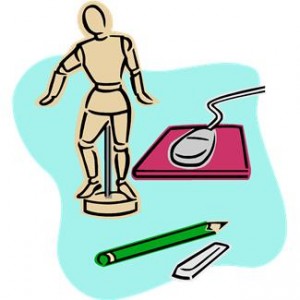Our Advice for Desktop Publishing Services
 Oftentimes, when I send information about our translation services, my clients ask me to clarify what a desktop publishing service is, as they are unfamiliar with the translation industry and its peripheral tasks. Desktop Publishing (DTP) is not involved in the translation per se of your document’s content, yet it is a service that all translation clients should consider. When people think about the general concept of translation, they think about the transferring of meaning from one language into another, via terminology and orthographies. Nonetheless, the visual aspect of your translated document, including the design, formatting, images, charts, and other graphics, is also important in conveying meaning to your intended audience.
Oftentimes, when I send information about our translation services, my clients ask me to clarify what a desktop publishing service is, as they are unfamiliar with the translation industry and its peripheral tasks. Desktop Publishing (DTP) is not involved in the translation per se of your document’s content, yet it is a service that all translation clients should consider. When people think about the general concept of translation, they think about the transferring of meaning from one language into another, via terminology and orthographies. Nonetheless, the visual aspect of your translated document, including the design, formatting, images, charts, and other graphics, is also important in conveying meaning to your intended audience.
At Trusted Translations, our desktop publishing service is an additional option. We have a few recommendations for you as our Spanish translation client for maximizing the quality of your desktop publishing services while reducing the cost.
Provide source files. We recommend that clients send the collective source files in which the document was created. For example, if you have a PDF file, which is non-editable, you can check the original format by examining the document properties in Adobe Acrobat. Collective source files refer to the original format, such as Adobe Indesign, along with all of the associated fonts and images (also known as links). Source files are important because since they are editable, our team can directly access the text without having to transcribe content or re-create any images or graphics. Furthermore, the charges for source files can be reduced to around $4 per page, as opposed to $8 per page without having the original source files.
Avoid embedded links. We recommend that our clients avoid using embedded links, if there is no additional content within the links that needs to be translated. Embedded links can also add more weight to a file, thereby making file transfers much slower between the client and translation provider.
Avoid text on images. If you only need the bare content to be translated, then the images within a document with text may be superfluous. Be sure to let your translation provider know exactly what should be translated, and whether you want the images included in the translation, which carries additional costs.
Use regular fonts. Not all fonts are available for every language. For example, if you send a document with specialized fonts, there may not be the equivalent font for the required language for translation.
In short, translation clients should not take the design work of translated documents for granted. The visual presentation of your document may convey as much meaning as does the bare content, and some aspects regarding the formatting may be culturally sensitive for certain target groups as opposed to others.
If you would like to learn more about our desktop publishing services and fees, feel free to contact us by requesting a free quote or sending an email to [email protected].
